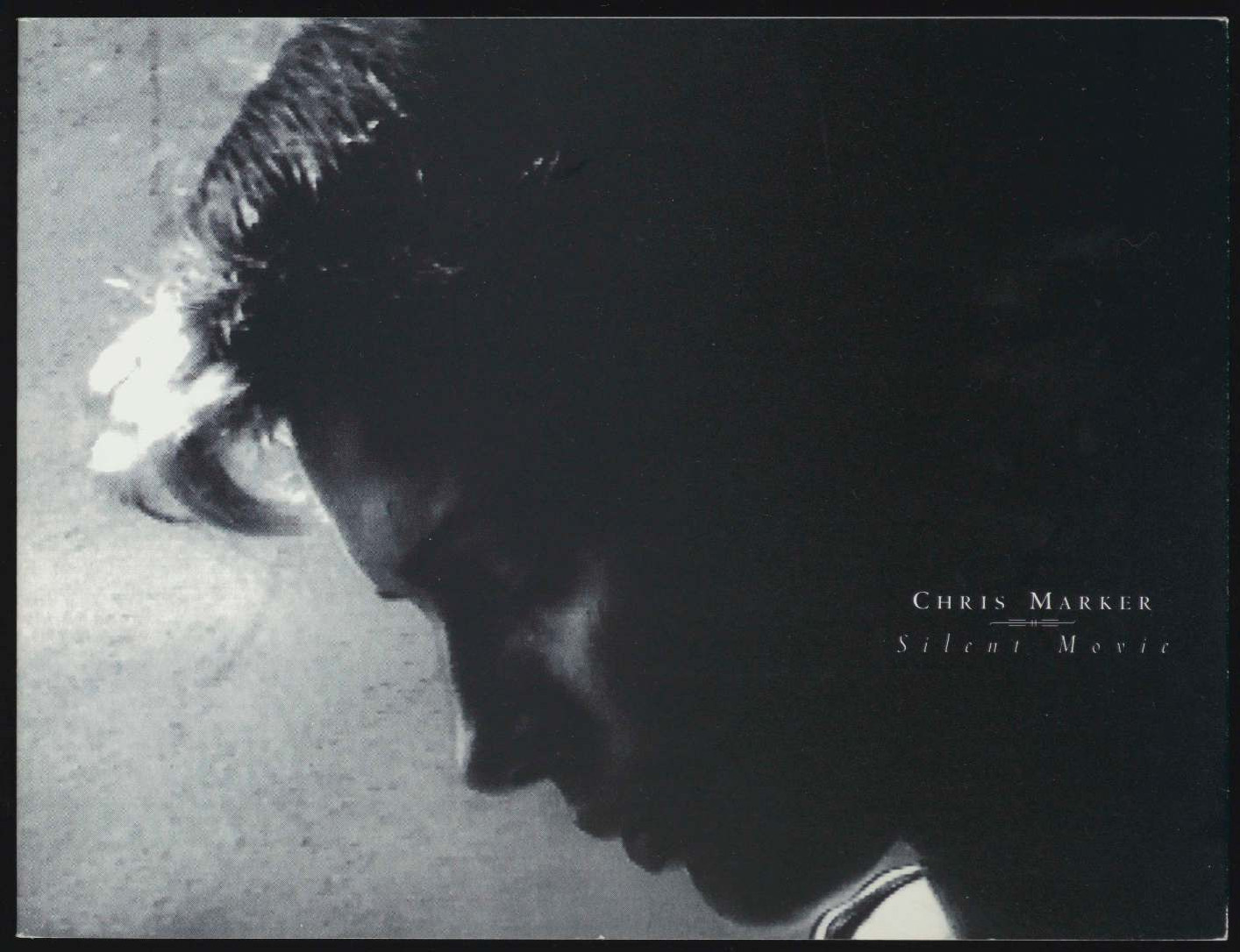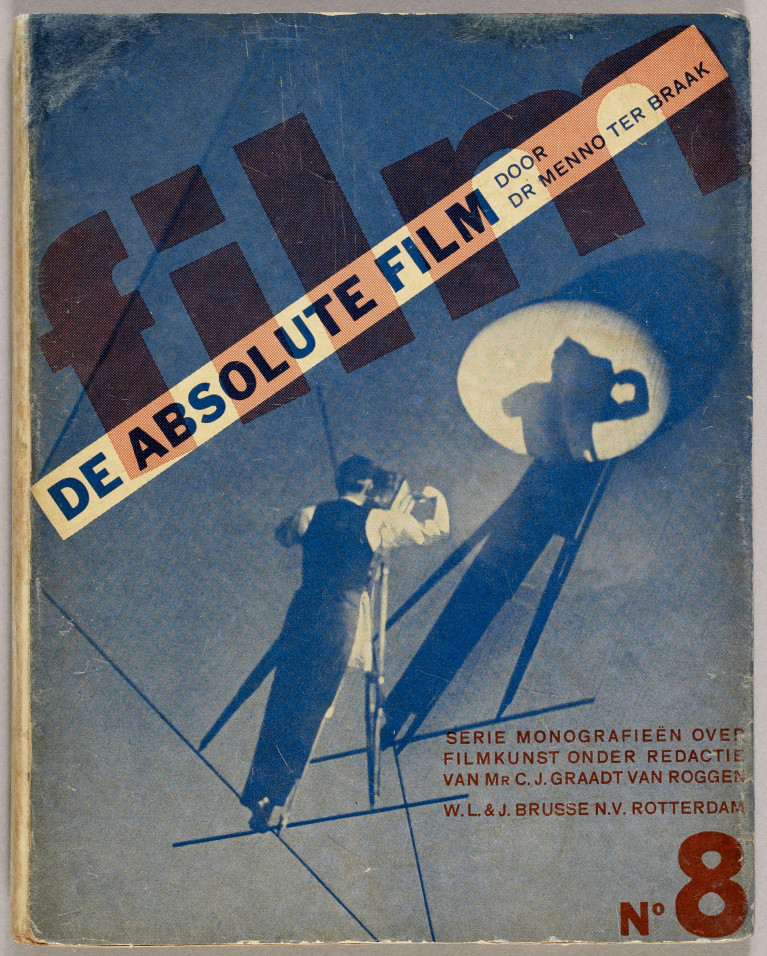Chris Marker: Silent Movie (1995)
Filed under artist publishing, catalogue | Tags: · cinema, film, film history, silent cinema, silent film

In Silent Movie, “Marker employs five-channels of video, each a thematic exploration of early cinema. Film images disclosing ‘The Journey,’ ‘The Face,’ ‘The Gesture,’ and ‘The Waltz’ occupy four of the monitors while on the fifth (and middle) monitor is a collection of ninety-four silent-era intertitles, ‘telling short, mysterious pieces of unknown stories.’ These moving images travel through a computer interface that assembles an ever-changing array of sequences. At any given moment, each passage is in unique juxtaposition with the other images passing across the surrounding monitors. Coloration, tone, and association are governed by chance contiguities; even the intertitles narrate across a field of fluid relationships.” (Source)
“Silent Movie. To give an installation the name of something that never existed is probably less innocent than the average cat may infer. There was never anything like silent cinema, except at the very beginning, or in film libraries, or when the pianist had caught a bad flu. There was at least a pianist, and soon an orchestra, next the Wurlitzer, and what contraptions did they use, in the day of my childhood, to play regularly the same tunes to accompany the same film? I’m probably one of the last earthlings–the ‘last,’ says the cat–to remember what themes came with what films: ‘A Midsummer Night’s Dream’ on Wings (the dogfights), Liszt’s ‘The Preludes’ on Ben Hur. A touch of humour noir here, to think that the saga of the young hebrew prince was adorned by Hitler’s favorite music, which in turn explains why you hear it more often than Wagner on the German war newsreels–but I get carried away. …”–Chris Marker (book page 15)
Edited by Ann Bremner
Publisher Wexner Center for the Arts, Ohio State University, Columbus/OH, 1995
ISBN 1881390101
40 pages
via MoMA
PDF
Video excerpt (8 min)
Series of Monographs on Cinema, 10 vols. (1931–33) [NL]
Filed under book | Tags: · abstract cinema, avant-garde, cinema, experimental film, film, film history, film sound, film theory, graphic design, montage, silent cinema


This set of monographs on early twentieth-century film is as important for the discourses on cinema, as it is for the graphic design.
Each volume has a cover created by the Dutch “typotekt” Piet Zwart, who had multiple careers as an interior designer, industrial design, commercial typographer, photographer, critic and lecturer. At the close of the twentieth century, Zwart was named ‘Designer of the Century’ by the Association of Dutch Designers.
Originally planned in twelve volumes, the last two in the series were not published: De techniek van de kunstfilm by M.T.H. Franken and Joris Ivens and Filmreclame by Piet Zwart.
Film: die serie monografieën over filmkunst
Series edited by C.J. Graadt van Roggen
Cover design Piet Zwart
Publisher W.L. & J. Brusse’s Uitgeversmaatschappij, Rotterdam, 1931-33
via Bibliothèque Kandinsky
Wikipedia (NL)
1 Het linnen venster, by C.J. Graadt van Roggen (1931, 72 pp, 71 MB)
2 Dertig jaar film [Thirty Years of Film], by L.J. Jordan (1932, 79 pp, 73 MB)
3 Nederlandsche filmkunst, by Henrik Scholte (1933, 64 pp, 63 MB)
4 Russische filmkunst, by Th. B.F. Hoyer (1932, 84 pp, 85 MB)
5 Duitsche filmkunst [German Cinema], by Simon Koster (1931, 75 pp, 71 MB)
6 Fransche filmkunst, by Elisabeth de Roos (1931, 59 pp, 61 MB)
7 Amerikaansche filmkunst, by Jo Otten (1931, 70 pp, 71 MB)
8 De absolute film, by Menno ter Braak (1931, 50 pp, 50 MB), HTML (at DBNL)
9 De komische film, by Constant van Wessem (1931, 56 pp, 49 MB)
10 De geluidsfilm [Sound Film], by Lou Lichtveld (1933, 79 pp, 76 MB), HTML (at DBNL)
Kenneth Anger: Hollywood Babylon, 2 Vols. (1959–)
Filed under book | Tags: · cinema, film, film criticism, film history, film industry, gossip, silent cinema

Hollywood Babylon is a book by avant-garde filmmaker Kenneth Anger which details the sordid scandals of many famous and infamous Hollywood denizens from the 1900s to the 1950s. First published in the US in 1965, it was banned ten days later and would not be republished until 1975. Upon its second release, The New York Times said of it, “If a book such as this can be said to have charm, it lies in the fact that here is a book without one single redeeming merit.”
The book details the stories of Hollywood stars from the silent film era to stars of the 1960s including stories about Lupe Vélez, Rudolph Valentino, Olive Thomas, Thelma Todd, Frances Farmer, Juanita Hansen, Mae Murray, Alma Rubens, Barbara La Marr, and Marilyn Monroe. (from Wikipedia)
Originally published in French as Hollywood Babylone, J.J. Pauvert, Paris, 1959
First U.S. edition was published by Associated Professional Services of Phoenix, Arizona, 1965
Volume 1
Publisher Arrow Books, San Francisco, 1975
Reprinted 1986
ISBN 0099497808
306 pages
Volume 2
Publisher E.P. Dutton, New York
Reprint by New American Library, New York and Scarborough, Ontario, 1985
331 pages
Kenneth Anger’s Hollywood Babylon (documentary, dir. Nigel Finch, 57 min, 1991, low quality)
Interview with Anger (Rocco Castoro, Vice, 2012)
Volume 1 (239 MB, no OCR)
Volume 2 (34 MB)

